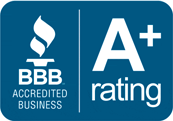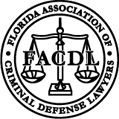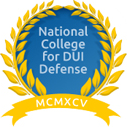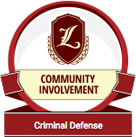- DUI
- Criminal Defense
- Florida DUI
- Traffic Offenses
- Drug Charges
- Marijuana Charges
- Violent Crimes
- Domestic Violence
- Temporary Injunctions
- Weapons Charges
- Theft Crimes
- White Collar Crime
- Juvenile Offenses
- Sex Crimes
- Violation of Probation
- Early Termination of Probation
- Seal or Expunge Criminal Record
- Criminal Appeals
- US Federal Offenses
- Misdemeanor Charges
- Felony Charges
- Co-Defendant Cases
- College Student Defense
- College Student Hearings
- FSU Students
- FAMU Students
- Florida Panhandle Arrests
- Extradition to Florida
- Bench Warrants / Warrants
- Emergency Bond Hearings
- Gambling Charges
- Drone Arrests
- Marsy’s Law
- UAS Infractions
- Introduction of Contraband
- Lying to Police
- Locations
- Case Results
- Our Firm
- Media
- Resources
- Blog
- Contact Us
Binge Drinking on College Campuses: The Dangers Associated with Drinking to Excess
April 10, 2018 Don Pumphrey, Jr. College Student Disciplinary Hearing, Drunk Driving/DUI Binge Drinking, College Binge Drinking Social Share
How much is too much to drink? This is a question that plagues society, the news, and college campuses across the country. There is no one-size-fits-all definition of “too much” alcohol for any particular individual. There are clear cut costs to exceeding that amount though, for each group of 18-24-year-old college students, approximately 1825 will die from accidental alcohol-related deaths, 696,000 will be assaulted by another student that has been drinking, and 97,000 will experience alcohol related sexual assault or date rape.[1] With so many repercussions from over-consumption of alcohol, it’s important to answer that question, rationalize how much is too much.
The U.S. Department of Health and Human Services has stated that moderate drinking is limited to 1 drink for women and 2 drinks for men per day.[2] That only begs the question, what is too much? Is a third drink for a man, or a second for a woman dangerous behavior? Many different groups have weighed in on problematic-binge drinking. The Substance Abuse and Mental Health Services Administration has said that 5 drinks for men and 4 for women – all in the same day – is binge drinking.[3] The National Institute of Alcohol Abuse and Alcoholism defines binge drinking as drinking until blood alcohol levels are at .08%,[4] coincidentally the legal limit for operating an automobile in all 50 states.[5]
How must alcohol is too much is going to depend on each individual. The results of binge drinking are never positive though. Temporary effects can include: coordination problems, dehydration, nausea, memory loss, shakiness, and – often tragically – poor decision making.[6] This impaired judgment can cause alcohol poisoning, or make it much easier for a person to be victimized by sexual assault or domestic violence. Short-term effects are only the tip of the iceberg for regular binge-drinkers, who often suffer from: brain damage, liver disease, stroke, heart problems, cancer, and infertility.[7]
These effects disproportionally affect young people, the CDC estimates that over half of binge drinks are consumed by those over the age of 35, meaning that age group is binging the most.[8] However, the most common age group is 18-35, which means that younger people are much more likely to binge.[9] Most people who drink before the legal age, report binge drinking.[10] The National Institute on Alcohol Abuse and Alcoholism has touched on how widespread binge drinking, is on college campuses:
Drinking at college has become a ritual that students often see as an integral part of their higher education experience. Many students come to college with established drinking habits, and the college environment can exacerbate the problem. According to a national survey, almost 60 percent of college students ages 18–22 drank alcohol in the past month, and almost 2 out of 3 of them engaged in binge drinking during that same timeframe.[11]
About 25% of college students see academic repercussions from drinking.[12] Those who binge drink are 6 times more likely to perform poorly from drinking when compared to moderate drinkers, and 5 times more likely to miss a class due to drinking.[13]
While binge drinking and its costs may begin at college, the ramifications do not end there. Excessive drinking costs taxpayers almost 250 billion dollars a year, or over $2 per drink.[14] These costs come from “workplace productivity, health care expenditures, criminal justice costs, and other expenses.”[15] Of these 250 billion dollars, binge drinking was responsible for 77% or almost $200 billion. Something needs to be done, and while communities and governments can step up to help, the ultimate responsibility falls on everyone. According to the CDC,[16] anyone who wants to help can:
- Choose not to drink too much yourself and help others not do it.
- If you choose to drink alcohol, follow the U.S. Dietary Guidelines on moderate alcohol consumption (no more than one drink per day for women and no more than 2 drinks per day for men).
- Support effective community strategies to prevent excessive alcohol use, such as those recommended by the Community Preventive Services Task Force.
- Talk with your health care provider about your drinking behavior and request counseling if you drink too much.
Our attorneys are experienced in Florida when it comes to DUI Arrests or other alcohol-related crimes, and can answer questions on how best to approach these issues. If you have any issues and you’re arrested or cited by law enforcement then you need an attorney who will work hard to defend your rights in order to have the best possible outcome. Call our office any time at 850/681-7777 to set a free consultation.
Additional Resources
The National Institute on Alcohol Abuse and Alcoholism (NIAAA) – The NIAAA “is one of the 27 institutes and centers that comprise the National Institutes of Health (NIH). NIAAA supports and conducts research on the impact of alcohol use on human health and well-being. It is the largest funder of alcohol research in the world. NIAAA leads the national effort to reduce alcohol-related problems by:”
- Conducting and supporting alcohol-related research in a wide range of scientific areas including genetics, neuroscience, epidemiology, prevention, and treatment.
- Coordinating and collaborating with other research institutes and federal programs on alcohol-related issues.
- Collaborating with international, national, state, and local institutions, organizations, agencies, and programs engaged in alcohol-related work.
- Translating and disseminating research findings to health care providers, researchers, policymakers, and the public.
The Guide to Community Preventive Services – Alcohol – “The Community Guide is a collection of evidence-based findings of the Community Preventive Services Task Force (CPSTF). It is a resource to help you select interventions to improve health and prevent disease in your state, community, community organization, business, healthcare organization, or school.” Its goal is to ask: “What has worked for others and how well? What might this intervention approach cost, and what am I likely to achieve through my investment? And, what are the evidence gaps?” The link above is a search for alcohol and all of the suggestions for a wide array of related issues in the community. The search can be tailored for any specific issue as well.
Center for Disease Control and Prevention – Alcohol and Public Health – “The CDC Alcohol Program works to strengthen the scientific foundation for preventing excessive alcohol use. Program Overview.”
Office of Disease Preventing and Health Promotion – dietary guidelines (2015-2020) appendix 9 – Alcohol – “The Dietary Guidelines does not recommend that individuals who do not drink alcohol start drinking for any reason; however, it does recommend that all foods and beverages consumed be accounted for within healthy eating patterns. Alcohol is not a component of the USDA Food Patterns.” This appendix helps evaluate different types of alcohol by explaining drink equivalents.
College Aim Alcohol Intervention Matrix – “CollegeAIM—the College Alcohol Intervention Matrix—is a new resource to help schools address harmful and underage student drinking. Developed with leading college alcohol researchers and staff, it is an easy-to-use and comprehensive tool to identify effective alcohol interventions. While there are numerous options for addressing alcohol issues, they are not all equally effective. CollegeAIM can help schools choose interventions wisely—boosting their chances for success and helping them improve the health and safety of their students.”
[1] National Institute of Alcohol Abuse and Alcoholism (NIAAA), College Drinking (last visited April 3, 2018), https://pubs.niaaa.nih.gov/publications/collegefactsheet/Collegefactsheet.pdf.
[2] https://health.gov/our-work/food-nutrition/2015-2020-dietary-guidelines/guidelines/
[3] NIAAA, Drinking Levels Defined (last visited April 3, 2018), https://www.niaaa.nih.gov/alcohol-health/overview-alcohol-consumption/moderate-binge-drinking (“The Substance Abuse and Mental Health Services Administration (SAMHSA), which conducts the annual National Survey on Drug Use and Health (NSDUH), defines binge drinking as 5 or more alcoholic drinks for males or 4 or more alcoholic drinks for females on the same occasion (i.e., at the same time or within a couple of hours of each other) on at least 1 day in the past month.”).
[4] Id.
[5] Governor’s Highway Safety Association, Alcohol Impaired Driving (last visited April 3, 2018), https://www.ghsa.org/state-laws/issues/alcohol%20impaired%20driving; but Id. (“Effective December 30, 2018, Utah’s BAC will be set at 0.05 percent.”).
[6] Alcohol Rehab Guide, Binge Drinking (last visited April 3, 2018), https://www.alcoholrehabguide.org/alcohol/binge-drinking/.
[7] Id.
[8] Centers for Disease Control and Prevention (CDC), Fact Sheet – Binge Drinking (last visited April 3, 2018),
[9] Id.
[10] Id.
[11] NIAAA supra note 1.
[12] Id.
[13] Id.
[14] CDC supra note 8.
[15] Id.
[16] CDC, Fact Sheet – Preventing Excessive Alcohol Abuse (last visited April 3, 2018)
Blog Written By:
J Brent Marshall, Florida State University College of Law and Pumphrey Law, Law Clerk












